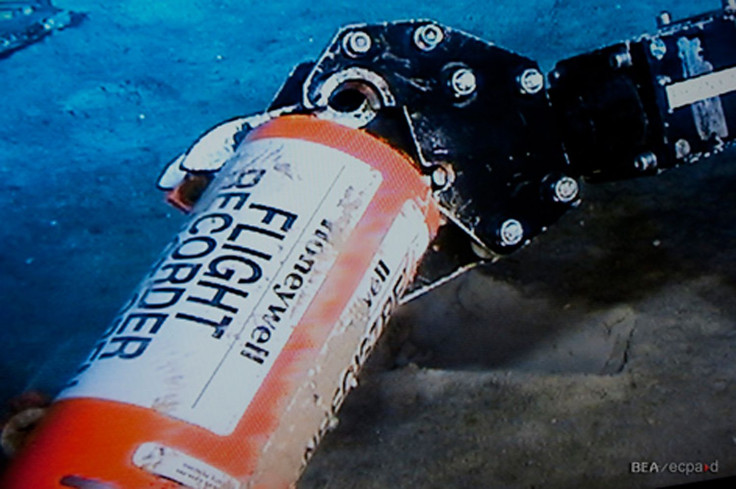Malaysia Flight MH370 Tragedy Has Forced FAA Regulation Debate But Live Streaming And Ejectable Black Boxes Not Part Of Future

A month after the final pings were emitted from the flight recorder of Malaysia Airlines MH370, the Federal Aviation Administration is moving ahead with required improvements to the all-important black box, though some experts say the agency is lagging behind available technology.
When asked what changes to the black box will come in the wake of the MH370’s baffling disappearance in March, the FAA responded with a vaguely worded statement saying it “continues to work with industry and our international partners on policy and guidance for advanced technologies that may be useful in aircraft accident investigations.”
The agency has proposed certain changes, including to the lifespan of the batteries that power black box transmissions, but some in the industry say the technology to significantly expand battery life and the range of signal emissions is available now.
“Aerospace has typically been very conservative [and] slow to implement technology until it’s completely proven out, and I think that’s what happened in this case,” Anish Patel, president of Dukane-Seacom, which makes an underwater aircraft beacon, said. Patel said Dukane sells a beacon that emits a signal for 90 days, as opposed to the 30-day lifespan that's the current standard, and it's ready to use.
Although such technology may be ready for deployment, the U.S. government has proposed giving airlines until 2020 to increase battery life capacity to 90 days on all existing planes.
In general, Patel said, most aviation companies don’t originate technology unless called upon to do so by legislative or rule changes. Doug Perovic, a professor of materials science and engineering at the University of Toronto, argued in a CBC news interview on March 27, 2014, that the subject of possible ways for advancing the technology is essentially moot.
"Look at how much money has been spent, on this [MH370] crash and others, just to do the post-mortem," he said. "It's crazy, when the technology is already there."
Though earlier prototypes exist, the last major innovation to standard black box technology dates back to 1990 with the implementation of solid-state flight-data recorders on planes that could hold far more data than previous methods. Two years later, the same technology moved into the cockpit, allowing for 30 minutes of voice recording; by 1995 that time span was increased to two hours. The FAA wants to implement 20-hour voice recorders eventually, but it has given no indication of when or if such technology will be introduced.
The FAA has considered some long-term alternatives to current methods of retrieving black box data, including live streaming of flight data. However, the agency has deemed the use of “transmittable data” impractical due to the amount of information that would be sent from aircrafts every second. Such potential overload of the airwaves is why airlines prohibit passengers from using their cell phones in flight.
Some say the FAA is slow to embrace such technology because of resistance from the airline industry. Bill Norwood, vice president of products and technology for JDA Aviation Technology Solutions, a Maryland-based consultancy, said airlines don’t want to spend money on live streaming because the industry has relatively low profit margins.
According to an article in the Economist from February 2014, airlines made only about 1 percent profit, or $4 for every passenger carried in 2012; added costs incurred by new FAA regulations would likely be perceived by the industry as eroding its already-thin bottom line. While airlines don’t directly influence the FAA, the powerful lobbying groups that airlines are known to hire have likely argued that live streaming is cost-prohibitive. Norwood said live streaming data would require expensive satellite links that would cost around $5 to $7 per minute.
Another option the FAA has considered: deployable black boxes. These data recorders would be designed to be physically ejected from an aircraft milliseconds before it crashed. That technology has been successfully used by the U.S. Navy since 1993, but it costs about $60,000 per unit.
On Feb. 28, 2012, the FAA required the battery life of underwater locator beacons to be extended from 30 days to 90 days, beginning with new aircraft, as of Feb. 28, 2015, and it required extending battery life on retrofitted aircraft by 2020. The rule, which affects all aircraft registered in the United States, is designed to extend the amount of time available for search and rescue teams to hone in on the signal.
The limits of black box technology were well-known prior to the MH370's disappearance, including during the search for Air France Flight 447, which was lost in June 2009 off the coast of Brazil and took nearly two years to locate. At that time, experts pointed to live streaming or deployable black boxes as a solution.
The FAA currently requires beacons to transmit signals of around 1.5 nautical miles, but it's expected to increase that requirement by 2018.
Dukane-Seacom, the primary manufacturer of transponders for the airline industry, told International Business Times that currently available transponders can be detected from as far as 11 nautical miles to 14 nautical miles in good conditions, though the FAA has not stipulated how far it will lengthen the requirement.
© Copyright IBTimes 2024. All rights reserved.






















